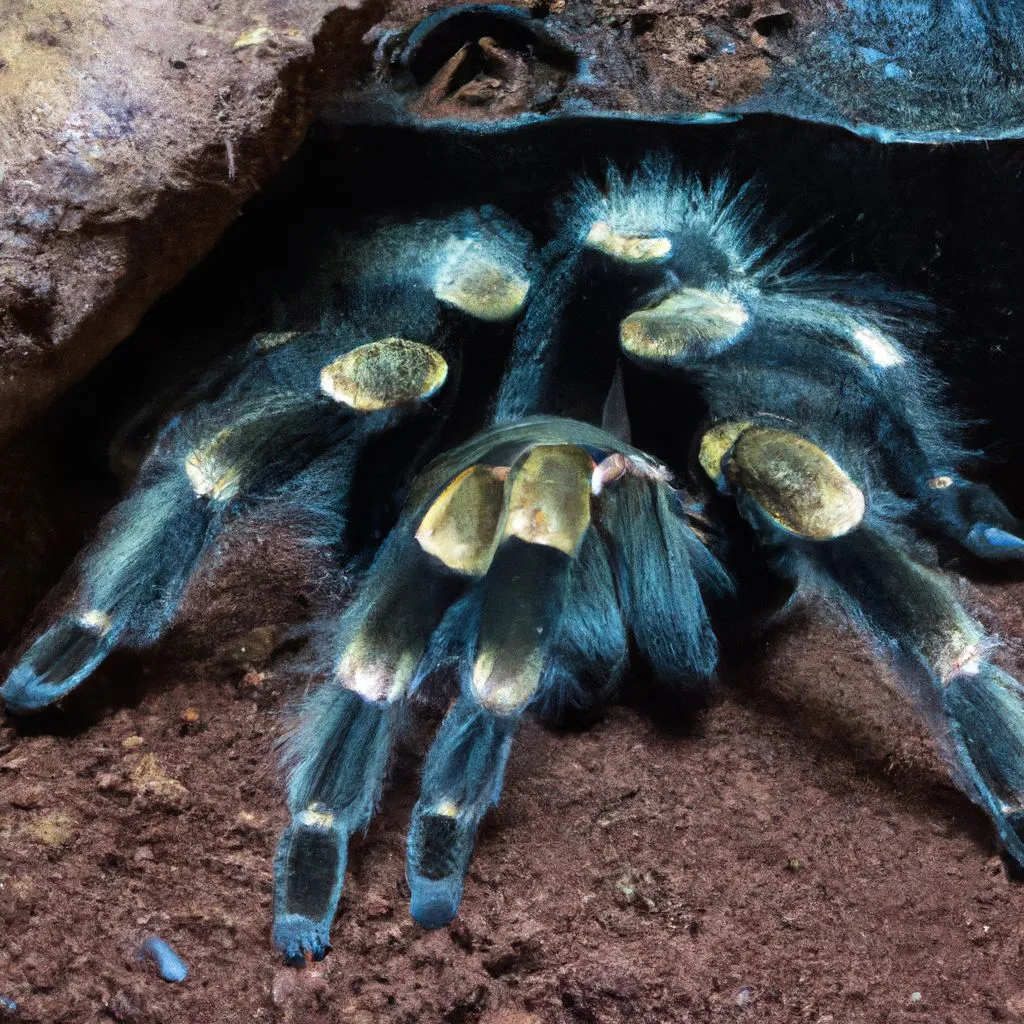What is a Bald Patch on a Tarantula Abdomen?
A bald patch on a tarantula’s abdomen refers to an area where the spider has lost its setae, which are fine, hair-like structures. These patches are often noticeable because they contrast with the rest of the abdomen, appearing smoother and sometimes darker. The presence of a bald patch can be a sign of various underlying issues, ranging from natural processes like molting to environmental stressors or health problems. Understanding the causes and implications of bald patches is crucial for responsible tarantula care. Knowing what to look for and how to address potential issues can help ensure the well-being of your arachnid companion. Careful observation and proactive care are essential to maintain a healthy tarantula.
Understanding the Function of Urticating Hairs
Urticating hairs are a unique defense mechanism found in many New World tarantula species. These hairs are barbed and designed to irritate predators. When threatened, the tarantula will flick these hairs off its abdomen towards the perceived threat. Once embedded in the skin or eyes of the predator, these hairs cause intense itching and irritation, deterring the threat. These hairs are not evenly distributed across the abdomen; tarantulas have specific patches where they are concentrated for easy flicking. The functionality of these hairs highlights the importance of the tarantula’s abdominal health, as they play a critical role in the spider’s self-defense. Protecting the area of the abdomen where these hairs are located helps keep the tarantula safe.
Why Tarantulas Have Urticating Hairs
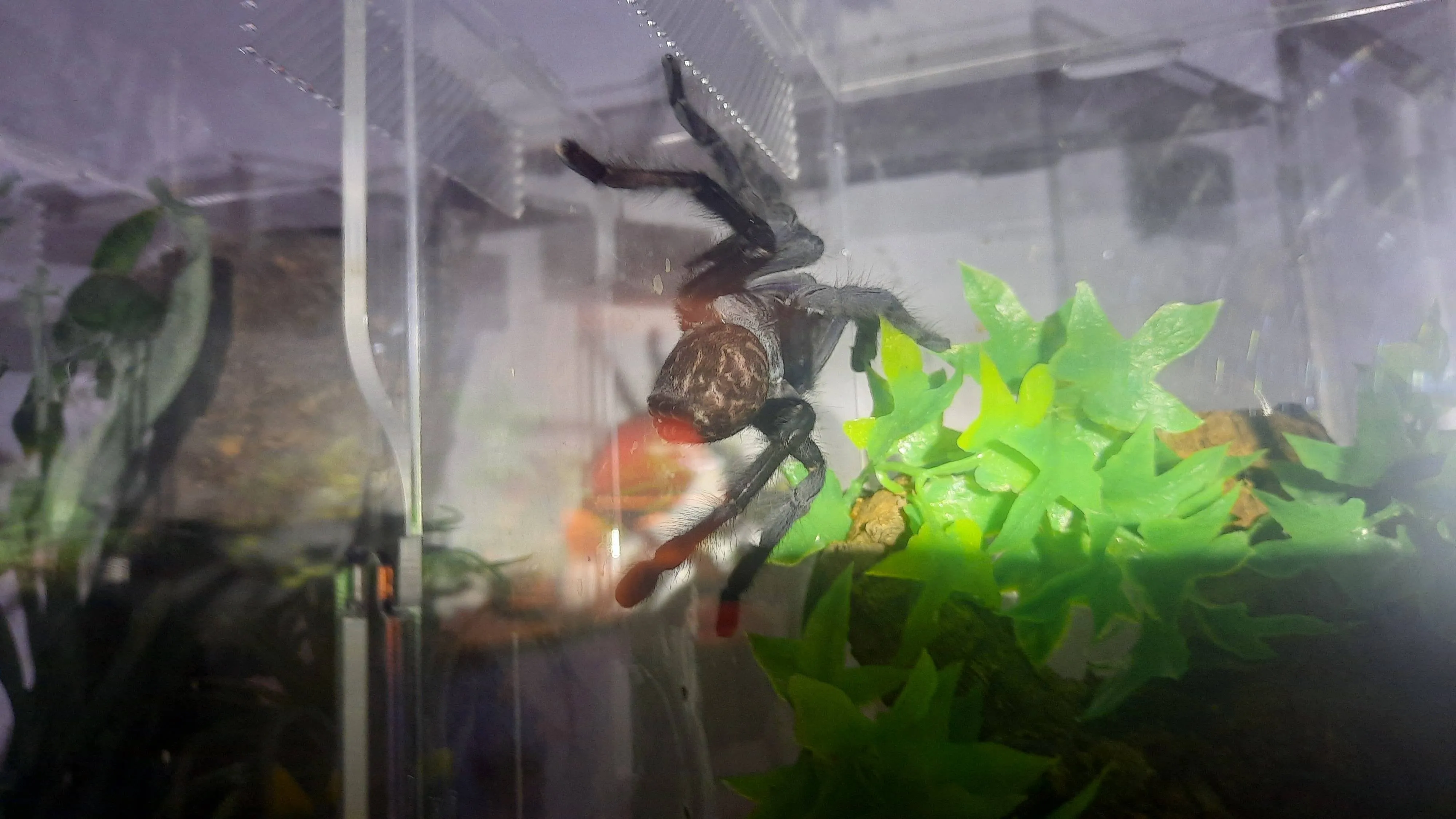
Tarantulas have urticating hairs as a primary defense mechanism against predators. In their natural habitats, tarantulas face threats from various animals, including birds, mammals, and other spiders. These hairs offer a non-lethal way to deter attackers. By flicking the hairs, the tarantula can create a cloud of irritation, giving it time to escape or making the predator think twice about attacking again. This defense strategy is particularly effective against smaller predators that are easily affected by the irritation caused by the hairs. The presence of these hairs is an evolutionary adaptation that helps tarantulas survive in diverse environments, ensuring the species’ survival.
Identifying a Bald Patch
Identifying a bald patch involves careful observation of your tarantula’s abdomen. Look for areas where the setae appear to be missing or significantly thinner than the surrounding areas. These patches will often look smoother and may appear darker due to the exposed skin or underlying structures. A healthy tarantula abdomen should have a consistent covering of hairs. A bald patch indicates that something is causing hair loss. Regular inspections are important, especially during molting, as hair loss can sometimes occur naturally during this process. However, persistent or extensive hair loss requires further investigation to determine the underlying cause and appropriate treatment.
Visual Inspection of the Abdomen
A visual inspection of the tarantula’s abdomen is the first step in identifying a bald patch. Gently observe the entire abdomen, looking for areas where the hair is sparse or missing. Use a bright light to get a clear view, and consider using a magnifying glass to examine the area more closely. Pay attention to the texture and color of the affected area. Healthy areas will be covered in a dense layer of setae, while bald patches will appear smoother. Check for any signs of irritation, such as redness or inflammation. Regular visual inspections should be part of your tarantula care routine, allowing for early detection of any issues, which is crucial for ensuring the tarantula’s well-being.
Signs of Hair Loss and Thinning
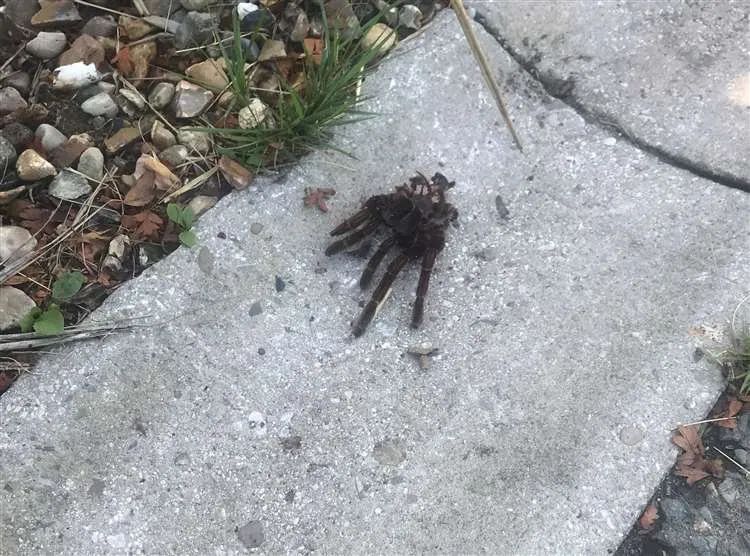
Besides the absence of setae, there are other signs of hair loss and thinning. You might notice the tarantula flicking hairs more frequently, especially if they are irritated. The affected area might appear shiny or have a different texture than the rest of the abdomen. In some cases, the skin may become visible through the sparse hair. If the hair loss is due to an underlying health issue, you might observe additional symptoms, such as lethargy, loss of appetite, or changes in behavior. Be on the lookout for any signs of discomfort or unusual behavior. Promptly addressing these issues is essential to prevent further complications and ensure the tarantula’s health. Regular observation of your tarantula will assist in detecting these changes quickly.
Common Causes of Bald Patches
Several factors can cause bald patches on a tarantula’s abdomen. These include natural processes such as molting, where the tarantula sheds its exoskeleton and may experience some hair loss. Rubbing against the enclosure walls or decorations can also wear down the setae. Additionally, parasites and mites can irritate the skin and lead to hair loss. Stress and environmental factors, such as improper humidity or temperature, can also contribute to bald patches. Understanding these common causes is essential for identifying the root of the problem and implementing appropriate preventative measures. Monitoring the enclosure and tarantula will help address or prevent future issues.
Moulting and Hair Loss
Molting is a natural process where tarantulas shed their exoskeletons to grow. During a molt, some hair loss from the abdomen is normal. The spider may lose setae as it sheds its old skin. However, the tarantula should regain its full hair coverage after the molt. If the hair loss persists or is excessive after molting, it could indicate other underlying issues. Always monitor your tarantula after a molt to ensure that the setae regrow normally. Provide a suitable environment to help with the molting process, including proper humidity and hiding places. If the bald patch persists after multiple molts, consult with a veterinarian or experienced tarantula keeper.
Rubbing Against Enclosure
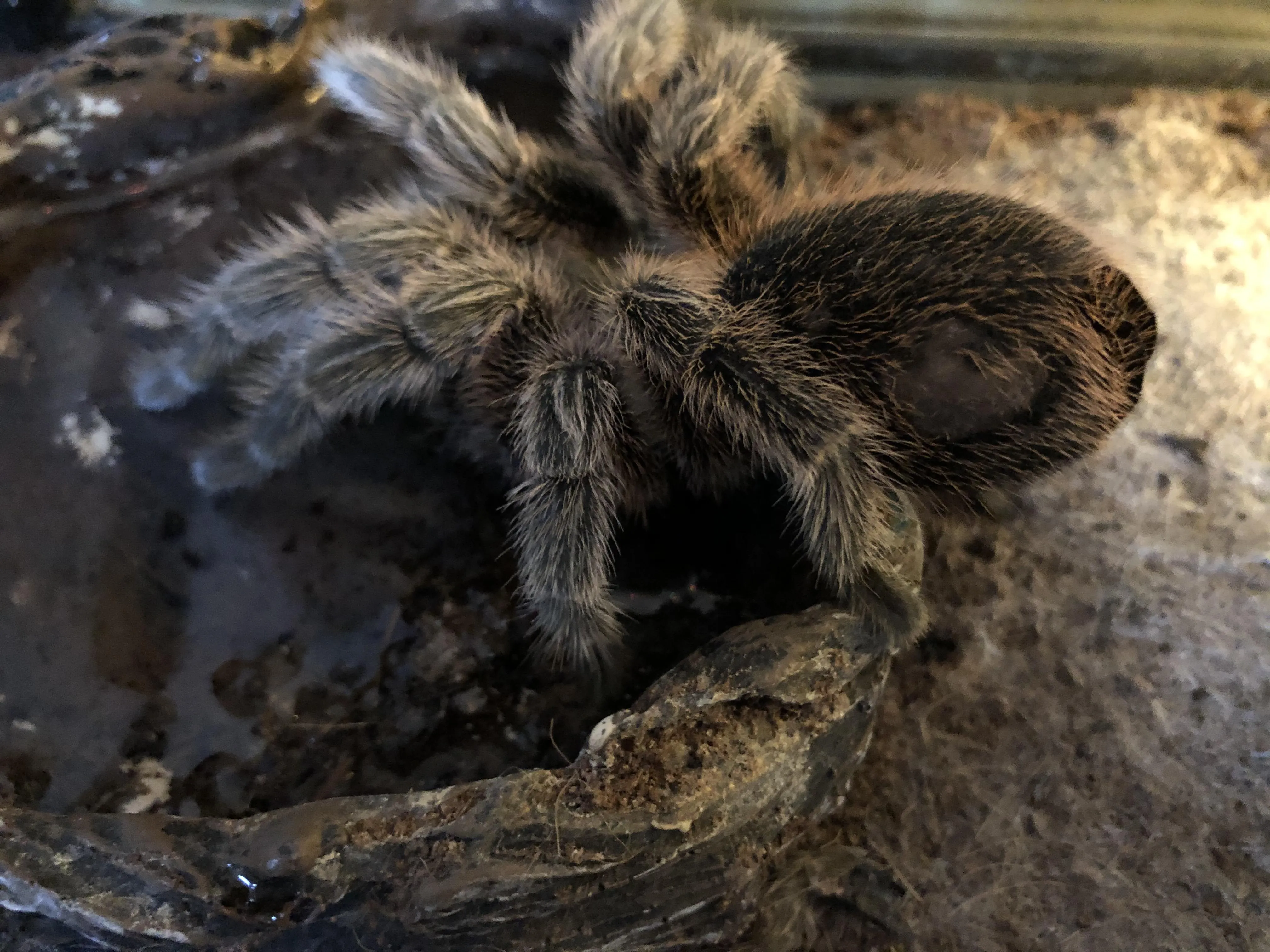
Tarantulas may rub against the walls, decorations, or substrate of their enclosure, which can lead to hair loss. This behavior can be caused by several factors, including stress, boredom, or an unsuitable environment. The rough surfaces can abrade the setae, causing bald patches. To prevent this, make sure the enclosure is large enough, provides enough hiding places, and has a suitable substrate. Ensure the humidity and temperature levels are appropriate. If the tarantula continues to rub against the enclosure, try rearranging the decor, adding more hiding places, or making other environmental adjustments. Regularly inspect the enclosure for any sharp objects or rough surfaces that could be causing irritation. Observe the tarantula to see what might be causing this behavior.
Parasites and Mites
Parasites and mites can also cause hair loss and irritation on a tarantula’s abdomen. These pests can feed on the spider’s hemolymph or irritate its skin, leading to hair loss and other health issues. If you suspect a parasite or mite infestation, it is essential to inspect the tarantula and its enclosure carefully. Look for tiny, moving spots on the spider or in the substrate. If you identify any parasites, you may need to take action to treat the infestation, which could involve cleaning the enclosure thoroughly and consulting with a veterinarian. Proper hygiene and quarantine of new tarantulas can help prevent infestations. Keep the enclosure clean and monitor the tarantula for any signs of parasitic activity.
Stress and Environmental Factors
Stress and environmental factors can significantly impact a tarantula’s health, including the condition of its setae. Improper humidity levels can lead to dehydration and skin problems, which may cause hair loss. Extreme temperatures, both hot and cold, can also cause stress. Other environmental stressors include a lack of hiding places, excessive handling, or vibrations from the enclosure. To prevent stress-related hair loss, it is important to maintain a stable and suitable environment. Provide a secure enclosure with appropriate humidity, temperature, and substrate. Minimize handling and avoid placing the enclosure in high-traffic areas. Monitor your tarantula’s behavior and look for signs of stress, such as excessive hiding or restlessness. Environmental adjustments can go a long way.
How to Prevent Bald Patches
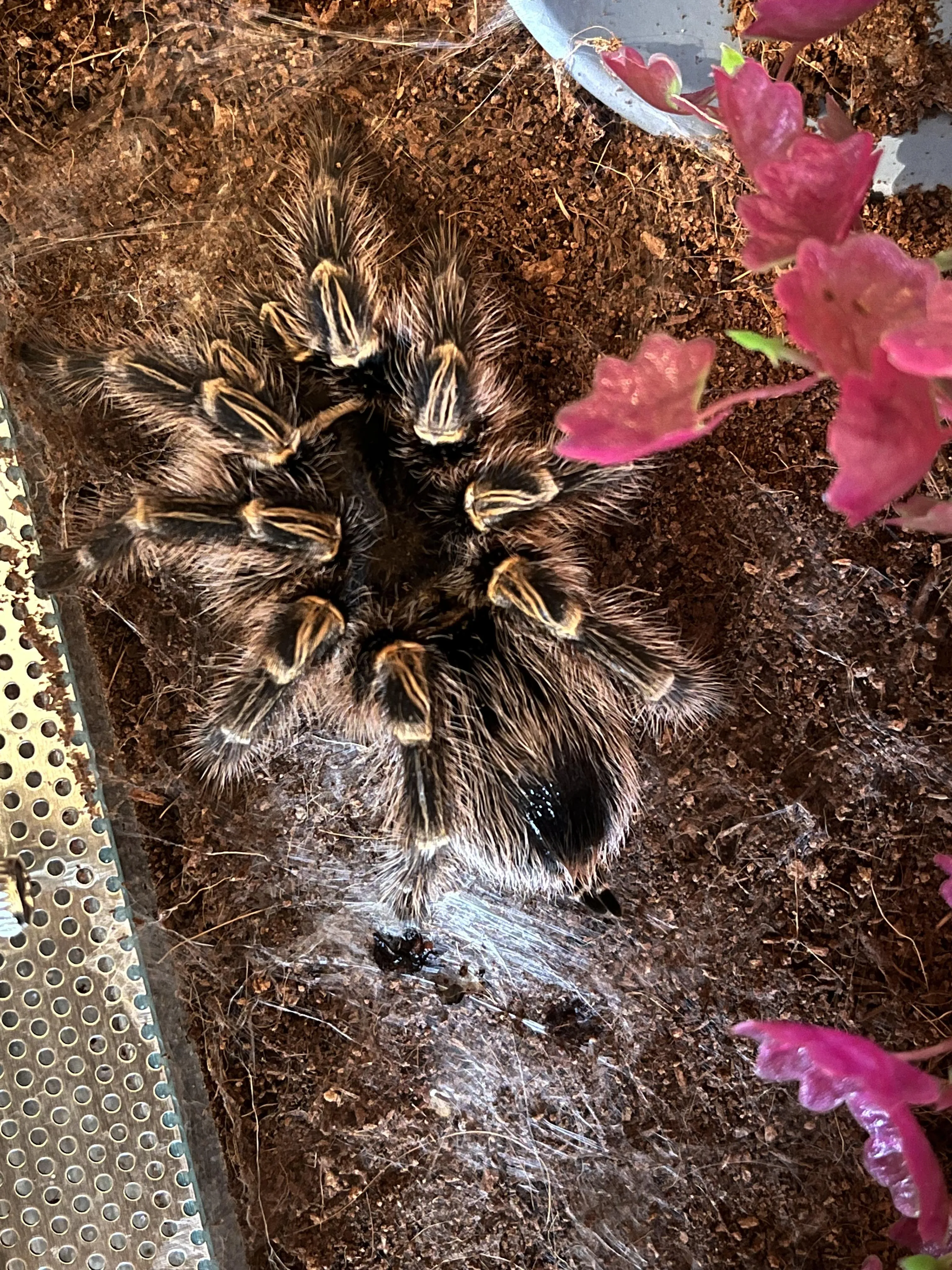
Preventing bald patches involves creating and maintaining a healthy environment for your tarantula. Regularly clean and maintain the enclosure, removing any uneaten food or waste. This will help prevent the growth of mites and other parasites. Provide adequate humidity levels for the tarantula’s species, using a hygrometer to monitor the environment. Offer a variety of hiding places, such as cork bark or artificial plants, to reduce stress and provide security. Minimize handling your tarantula, especially if it is stressed or about to molt. Provide a balanced diet of appropriately sized insects. By implementing these preventative measures, you can help keep your tarantula’s abdomen healthy and reduce the risk of bald patches.
Providing a Suitable Enclosure
A suitable enclosure is fundamental to preventing bald patches. The enclosure should be the right size for the tarantula’s species and size, allowing ample space for movement. Use a substrate appropriate for the species, such as coconut fiber or peat moss, which helps maintain humidity and allows the tarantula to burrow. Provide several hiding places where the tarantula can feel safe and secure. Ensure the enclosure has adequate ventilation to prevent the buildup of harmful gases and maintain proper humidity levels. Choose a durable, non-toxic material for the enclosure and avoid any sharp edges or abrasive surfaces that could cause injury. A well-designed enclosure is vital for your tarantula’s well-being.
Maintaining Proper Humidity Levels
Maintaining proper humidity levels is crucial for tarantula health and preventing bald patches. Different species of tarantulas have different humidity requirements, so it is essential to research the specific needs of your tarantula. Use a hygrometer to monitor the humidity levels in the enclosure, and adjust as needed. Ensure the enclosure’s humidity doesn’t get too high or too low. Provide a shallow water dish for drinking and to help regulate humidity. Mist the enclosure regularly, depending on the species’ needs. Avoid over-misting, which can lead to mold growth. By paying close attention to humidity, you can help your tarantula maintain healthy skin and hair, preventing potential problems.
Avoiding Overhandling Your Tarantula
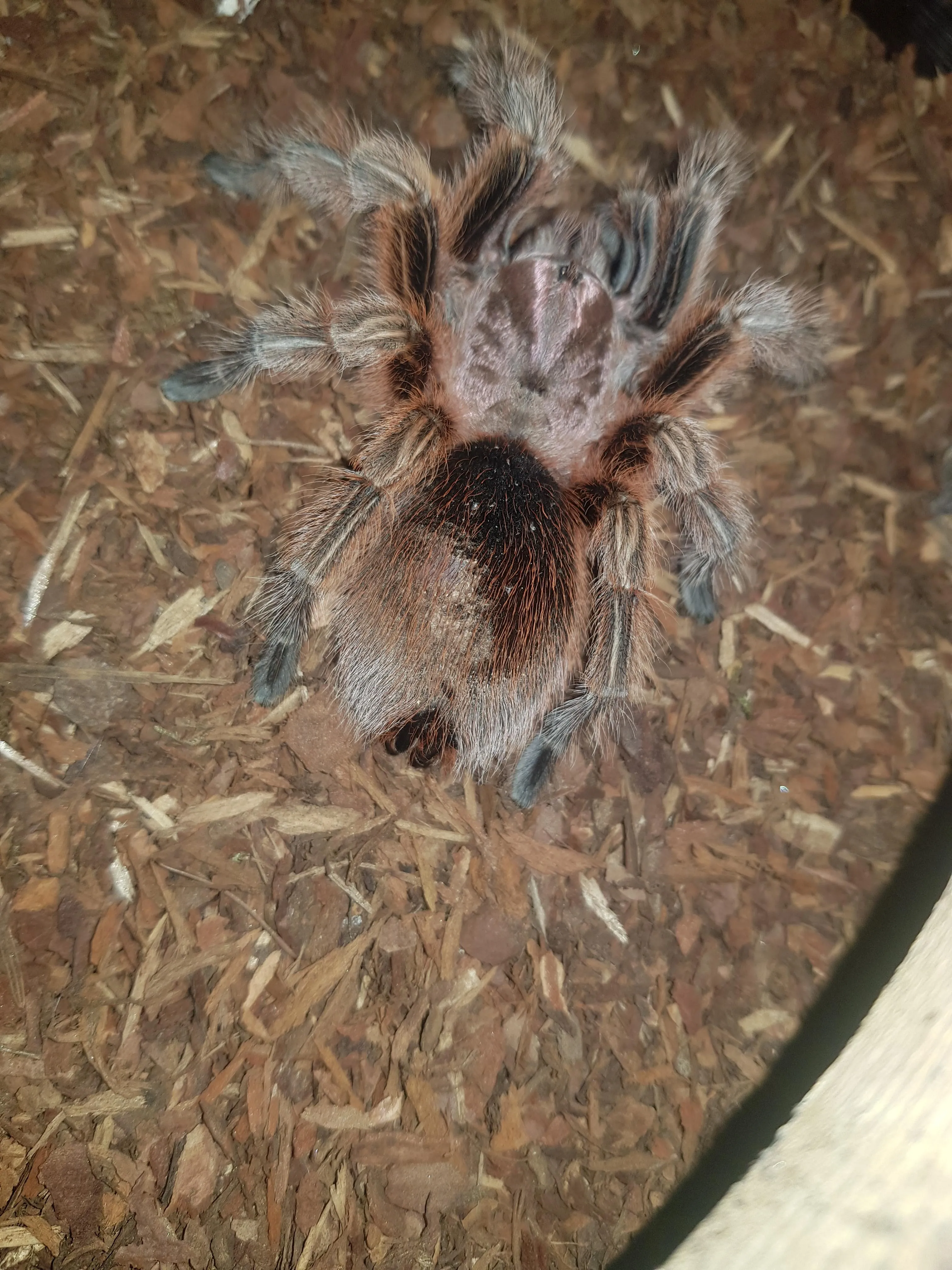
Overhandling can be a significant stressor for tarantulas, potentially leading to hair loss and other health issues. Tarantulas are generally not accustomed to being handled. Handling should be kept to a minimum, and only if necessary. When handling, be gentle and avoid sudden movements. Ensure your hands are clean and free of any substances that could harm the tarantula. If you must handle your tarantula, do so in a controlled environment, close to the ground to minimize the risk of a fall. Handle the tarantula as infrequently as possible, as this will help reduce stress and keep your tarantula safe and happy. Always prioritize your tarantula’s well-being.
What to Do if Your Tarantula Has a Bald Patch
If you discover a bald patch on your tarantula, the first step is to assess the situation. Determine the size and location of the bald patch, and assess its appearance. Is it a small patch or widespread? Is there any redness, inflammation, or signs of parasites? Observe your tarantula’s behavior, looking for signs of stress, lethargy, or loss of appetite. Once you have gathered this information, you can begin to identify the potential cause. Based on your assessment, you may be able to address the problem yourself, or you may need to seek help from a veterinarian or experienced tarantula keeper. Swift action is necessary to ensure the health and safety of your tarantula.
Assessing the Severity of the Bald Patch
Assessing the severity of the bald patch is crucial for determining the appropriate course of action. A small, localized bald patch might be less concerning than a large, widespread one. Note the size and location of the bald patch and the tarantula’s general health. Look for other signs of distress, such as changes in behavior or eating habits. If the bald patch is recent and the tarantula seems otherwise healthy, you can monitor the situation and provide supportive care. However, if the bald patch is large, accompanied by other symptoms, or appears to be worsening, it is best to seek professional advice from a veterinarian or experienced tarantula keeper.
Providing Supportive Care
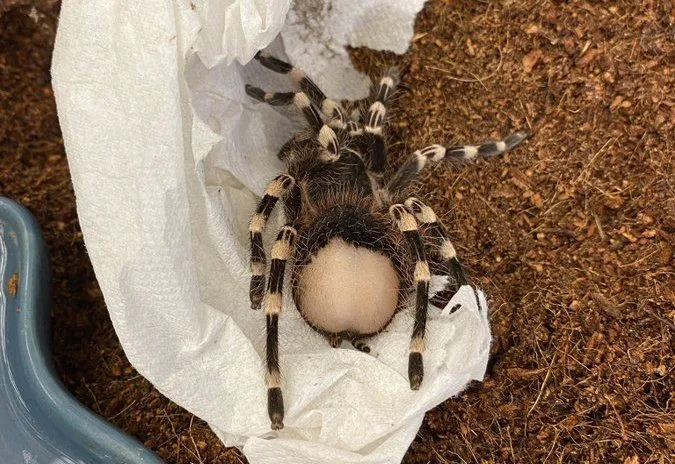
Providing supportive care can help your tarantula recover from a bald patch. Ensure the enclosure is clean and provides a stable environment with appropriate humidity and temperature levels. Offer a varied and balanced diet and make sure the tarantula has access to fresh water. Provide ample hiding places to reduce stress. Avoid handling the tarantula unless necessary. If you suspect an infection or parasite infestation, consult with a veterinarian for appropriate treatment. In many cases, the bald patch will resolve over time with proper care. Supportive care helps the tarantula recover from whatever is causing the bald patch and promotes overall health.
Consulting with a Veterinarian
If you are concerned about a bald patch on your tarantula, it is always wise to consult with a veterinarian experienced in exotic animal care. A veterinarian can perform a thorough examination to determine the cause of the bald patch and recommend appropriate treatment. They can identify any underlying health issues and rule out parasites, mites, or infections. They may suggest specific treatments, such as medications or changes to the environment. Consulting with a vet ensures your tarantula receives the best care and that any health problems are addressed promptly and effectively. A veterinarian can also offer guidance on how to prevent future problems and maintain your tarantula’s health.
